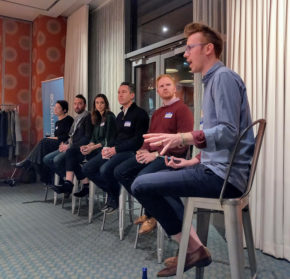
Considering the deluge of articles on social media, email, and RSS, headlines are integral to our efforts at optimizing native content for publishers. A good headline acts as an attention grabber; it humors, excites, compels, and/or shocks, promising readers a major payoff should they click through — and for publishers, a sale contributing to their revenue.
However, while best practice-type guides like this one and this one abound, resources are pretty limited for commerce content in particular. With the rise of affiliate and native commerce as essential components of most modern publishers’ monetization strategies, this topic is sure to garner more attention in the coming year. Do the same rules apply to commerce content as to traditional content? Not exactly. At StackCommerce, we’ve dug deep to determine best practices unique to commerce content, and have compiled the best of them below for anyone interested in a quick primer:
1. Shorter headlines aren’t necessarily better
Virtually every headline guide online trumpets the same rule: keep headlines as brief as possible. While we do generally aim for shorter headlines (~8-10 words each), we’ve found that many of the best performing headlines from across our partner network are on the longer side:
- (15 words): This may be the world’s smallest camera drone, but it packs some serious flying power
- (16 words): 3 meals from Blue Apron make a delicious last minute gift & are now over 50% off
We do approach this rule with a few caveats. Only use longer headlines if:
- It’s absolutely needed to communicate important details about highly multifaceted deals.
- They are written meaningfully while still reading concisely (no fluff!).
- They are fully displayed on publishers’ sites.
For a publisher whose headlines are often truncated, best practices say to stick almost exclusively to short headlines.
2. There is no universal headline formula for commerce content
When you’re working with publishers with vastly different audiences, like we do, headlines must be approached on a case-by-case basis. This means tailoring the voice and formatting of each so it embodies that of its publisher, and ultimately getting readers to engage and enjoy the content.
For instance, commerce content typically falls into two categories: deal-focused and story-focused. Whether a publisher may opt for one or the other in headlines really depends upon whether a publisher’s audience is simply deal hungry or prefers more informative articles:
- Advertorial: A Complete Computer Science Education—Minus the Student Loans
- Informative: Here’s how you can master AI and machine learning in 2017
3. Strategically frame discounts so they’re most compelling
Just because something is on sale doesn’t mean it will interest readers at face value. Each deal should be analyzed individually to determine whether to highlight the percentage markdown, dollar off amount, price point, or none of the above — generally following these rules of thumb:
- Highlight the % markdown if ~40% or more
- OR mention markdown as a $ off amount
- works well with ‘hundreds off‘ discounts
- avoid under $20 off (even this is low) or $1K+ off (seems unbelievably high)
- OR say we’re dropping the price from $X to $Y if the $ off discount is significant
- OR mention the sale price in the context of how much the featured product usually costs
Here are some headline examples honing in on markdowns:
- Score these extra-long Samsung certified microUSB cables at a 3-for-1 price (deal for reference here)
- Get an award-winning Rosetta Stone Language Box Set for $90 off (deal for reference here)
Typically most headlines should focus on a mixture of the discount and deal feature, but in cases where the discount isn’t at all compelling — it’s most effective to focus exclusively on the deal feature:
- Loot Crate’s Mystery Box is a great holiday gift for your favorite gamers and geeks
- Make your own cold brew anywhere with this portable coffee maker
Above all, commerce content should tell a story – whether it’s a discount, an interesting feature, a surprising result, etc. – every product, publisher, and moment is unique. Great commerce content is beneficial to all parties: readers discover great products on their favorite publications and publishers make the profits they need to succeed. The year ahead promises to bring to light best practices on how to navigate the complex world of affiliate and native commerce, and we will continue to share our findings to help publishers surpass their expectations and delight their readers daily.

